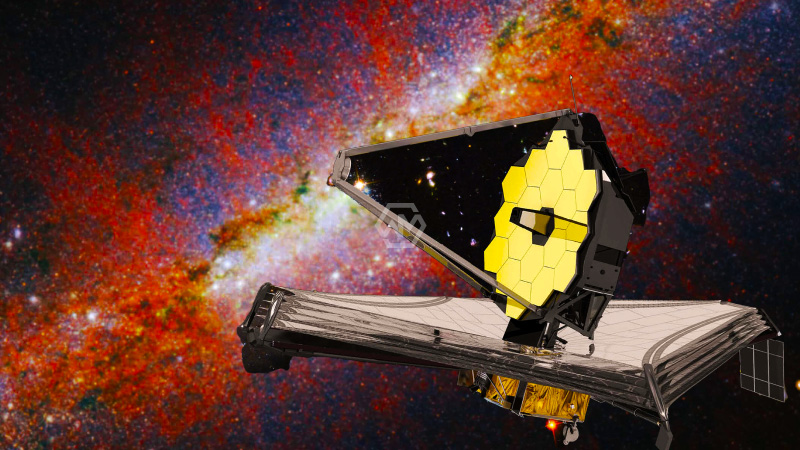- While gas and residue are extremely effective at engrossing apparent light, in any case, infrared light can fall through this material.
- That implies, with its strong and delicate infrared perspective on the universe, the JWST is the ideal instrument to get right to the core of star birth.
Webb concentrates on each stage throughout the entire existence of our Universe, going from the main iridescent gleams after the Enormous detonation, to the development of planetary groups equipped for supporting life on planets like Earth, to the advancement of our Planetary group. Webb sent off on Dec. 25th, 2021. It doesn’t circle the Earth like the Hubble Space Telescope, it circles the Sun 1.5 million kilometers (1 million miles) away from the Earth at what is known as the second Lagrange point or L2.
James Webb Space Telescope
The James Webb Space Telescope (JWST) has zoomed in to the core of the Stogie World, a district of room that is burning with a dangerous episode of star birth.
This starburst world, otherwise called More Chaotic 82 (M82), has a minimal yet tempestuous climate at the center could give researchers a clearer image of how stars are conceived as once huge mobs, and how outrageous conditions shape the universes around them.
Situated around 12 million light-years away in the heavenly body of Ursa Major, M82 is framing stars multiple times quicker than our own somewhat peaceful universe, the Smooth Way. The group imaged the center of this starburst cosmic system with the JWST’s Close Infrared Camera (NIRCam) to research what conditions are driving the arrangement of baby stars.
Star development is normal across the universe, however has had the option to keep a demeanor of secret since gas and residue that frames the unrefined substance vital for star arrangement likewise successfully covers the cycle.
The NIRCam pictures gathered by Bolatto and partners likewise profited from an extraordinary mode that forestalled the brilliant baby stars at the core of M82 from overpowering the instrument.



